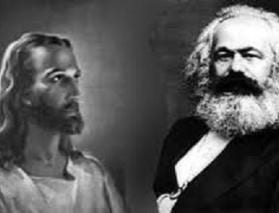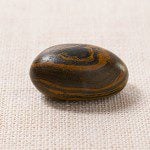Lectionary Reflections
Acts 9:36-43
April 21, 2013
Now we are three Sundays removed from the great Easter celebration and are continuing to explore what specific effects that event had on the very earliest believers. Earlier in chapter 9 we witnessed the familiar conversion of Saul, the killer of Christians, into Paul, the chief among the Christians. Luke now turns us toward the apostle Peter once again and his wonder-working power among the Gentiles on the coast of the Mediterranean. In this story, actually in the two stories of his miraculous healings at the end of chapter 9, Peter will join a long line of God's agents who uniquely demonstrate the power of God in the world.
In Acts 9:31-35, Peter heals a man paralyzed for eight years, at least, and was confined by his disability to a cot. Peter takes a look at the man and announces, "Aeneas, Jesus Messiah is healing you! Get up! Make your bed!" The result of the miracle is that "everyone living in Lydda and in the Sharon saw him, and these turned to the Lord." Perhaps the "him" of the sentence means both Peter and the healed Aeneas. The now-walking Aeneas is proof that the power of the resurrection has been loosed into the world.
Then in 9:36-43 the miraculous power of God acts even more astonishingly. "Now in Joppa (a place close to Lydda) there was a certain woman disciple whose name was Tabitha. Translated (from Aramaic into Greek) this means Dorcas" (Acts 9:36a). The word in each language means "gazelle." There is a quite striking linguistic use in that sentence. Dorcas is called a "female disciple," mathetria in Greek, the only time that term is used in the entire New Testament. Luke implies by that usage that Dorcas is fully the equivalent of the male disciples who are named with the masculine form of the noun in 9:38 and in numerous times in the early literature of the New Testament. And Luke goes on to say precisely why Dorcas is called "disciple": "she was generous in her good works and in her giving of alms" (Acts 9:36b). Precisely the same attribute will be designated for Cornelius, the famous Gentile convert of chapter 10 that soon follows.
But tragedy strikes the disciple Dorcas; she grew so sick that she died. The widows, who are either part of a group of followers of the wonderful Dorcas or may have been recipients of her good works and alms, no doubt in great sorrow wash their compatriot and leader (?) and place her in an upper room (9:37). Then we are told that "the disciples," who have apparently witnessed the death of Dorcas, upon hearing that Peter was in nearby Lydda, urge him to come to them without delay (9:38). Immediately Peter comes to Joppa and is led to the upper room where Dorcas' body has been displayed, just before her burial. It was customary and crucial that bodies be buried quickly in the dry climate of the Mediterranean, so Peter wastes no time.
In a very touching scene, the widows, weeping all the while, "showed him the tunics and cloaks that Dorcas made when she was with them" (9:39). By this somber action, apparently performed in silence, the widows urge Peter to do something about the tragedy. They want their friend and mentor back! Have they heard of the power of resurrection that Peter seems to possess? The text is silent on that score, but Luke is intent on demonstrating that Peter is somehow representative of that power.
Peter sends the entire group outside, falls to his knees and prays.
Then, turning to the body, he said, 'Tabitha, arise!' The dead woman opened her eyes at this command, saw Peter, and sat back up. He gave her his hand and raised her. He called the holy ones and the widows. He presented her to them alive (9:40-41).
And, as occurred in the healing of the paralyzed Aeneas earlier in the chapter, "many believed in the Lord" (9:42, and above 9:35).
Even a cursory look at the Gospel of Luke will discover similar accounts. The verb, "arise" (anistemi in Greek) is Luke's preferred term for the resurrection of Jesus (Lk. 9:22, 18:33, 24:7, 46; Acts 2:24, 32, 3:26, 13:32). More specifically, in the Gospel story of the raising of a little girl by Jesus (Lk. 8:49-56), we find the use of messengers, weeping bystanders, exclusion of people from the room of the miracle, the call to rise, and the taking of the hand. It is clear that Luke wants his readers to be certain that the power demonstrated by the risen Lord is now manifest in those who follow him in the early community of faith.
And other parallels are not difficult to find. The healing of the paralytic and the raising of a widow have been seen in accounts about Jesus in the Gospel (Lk. 5:17-26, 7:11-16). And of course readers of the Hebrew Bible have witnessed much older examples of such miraculous healings by the prophets Elijah and Elisha (1 Kgs. 17:17-24; 2 Kgs. 4:32-37). Peter thus stands in a long line of prophets who work signs and wonders among the people.





